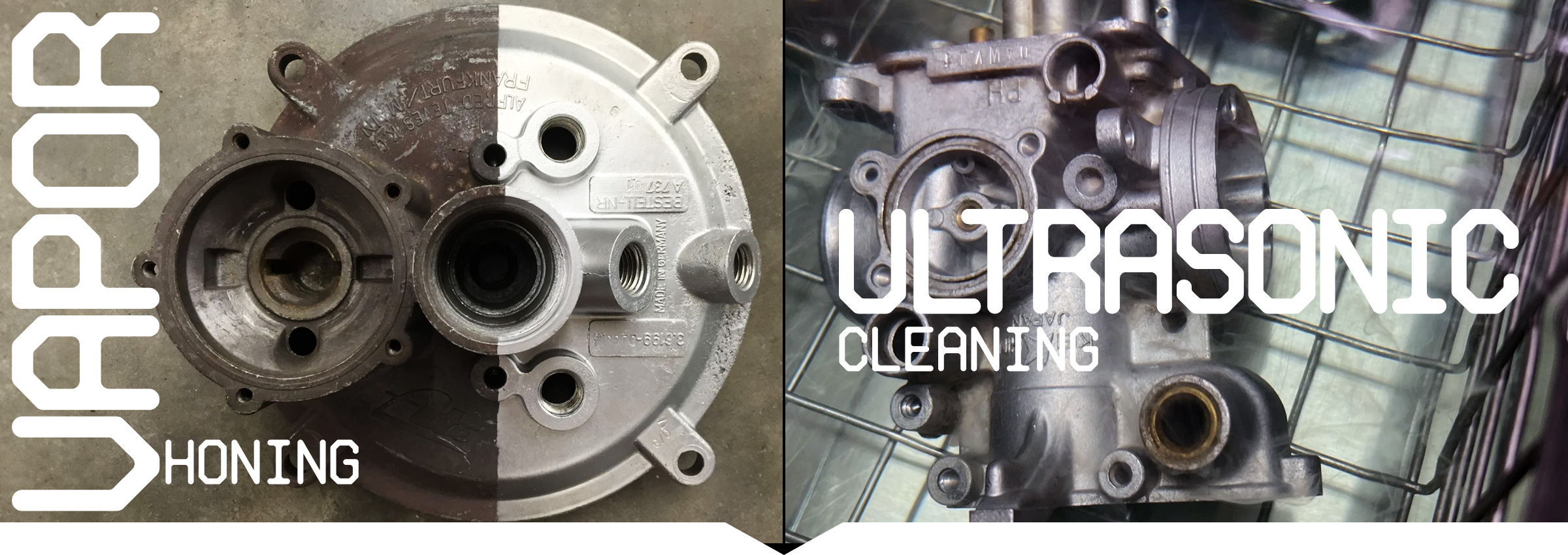What types of metals are suitable for vapor honing? A wide range of metals can undergo vapor honing with great success. We worked on cast aluminum, mild steel, brass, and stainless steel, all yielding excellent results. Particularly, cast aluminum engine parts often showcase stunning outcomes. However, it’s worth noting that ferrous metals are prone to flash rusting post-vapor honing, prompting me to apply a rust inhibitor to safeguard them.
Can vapor honing effectively restore chrome? Vapor honing can indeed eliminate rust and corrosion from chrome surfaces, but it will impart a satin finish, dulling the chrome’s original shine. Thus, we generally advise against vapor honing chrome unless you plan on re-plating it and merely seek to assess the underlying metal’s condition.
Is vapor honing suitable for removing paint or powder coating? Technically, vapor honing can remove paint or powder coating if aggressive media like silicon carbide is employed. However, our setup utilizes very fine mesh glass beads, which are not aggressive enough for such tasks. Yet, if there are remnants of paint or primer after paint remover usage, my process can effectively clean them up.
How long does vapor honing typically take? The duration varies depending on factors like the item’s size and complexity. Generally, we can complete an order within a business day, though larger or intricate items may necessitate more time. Moreover, parts with deep fins require more honing time compared to flat or rounded surfaces. If the item isn’t relatively clean and free from grease/oil, additional time is required for cleaning before honing.
Is vapor honing safe for bearing and gasket surfaces? Absolutely! Vapor honing removes minimal metal, making it ideal for cleaning gasket surfaces without compromising them. However, it won’t eliminate hard, dried-on gaskets, necessitating their removal beforehand to avoid additional labor charges. For bearing surfaces, we can mask them off to preserve wear marks on mating surfaces if you plan on reusing them.
How does vapor honing treat screws? Vapor honing is thread-friendly and effectively eliminates gunk and corrosion without causing harm. While it won’t fix damaged threads or screw/bolt heads, it significantly enhances their appearance without replacement.
Can vapor honing rectify deeply corroded or gouged surfaces? No, vapor honing alone cannot address deep corrosion or gouging. However, employing a sequence of grinding and polishing wheels can mitigate pits, tool marks, and gouges before vapor honing, resulting in splendid outcomes. Feel free to provide images or bring the piece for evaluation.
Can the entire exterior of an engine be vapor honed? Unfortunately, no. Complete disassembly is required as the fine glass beads, under high pressure, can infiltrate every opening. Thus, all parts, including linkages, must be removed before vapor honing components like carb bodies or wheels.
What are the costs associated with vapor honing? Vapor honing labor is priced at $75 per hour. However, most tasks only require a fraction of an hour. For additional pre-work like dirt/grease or paint removal, or for addressing scratches and gouges, the rate is $50 per hour.






